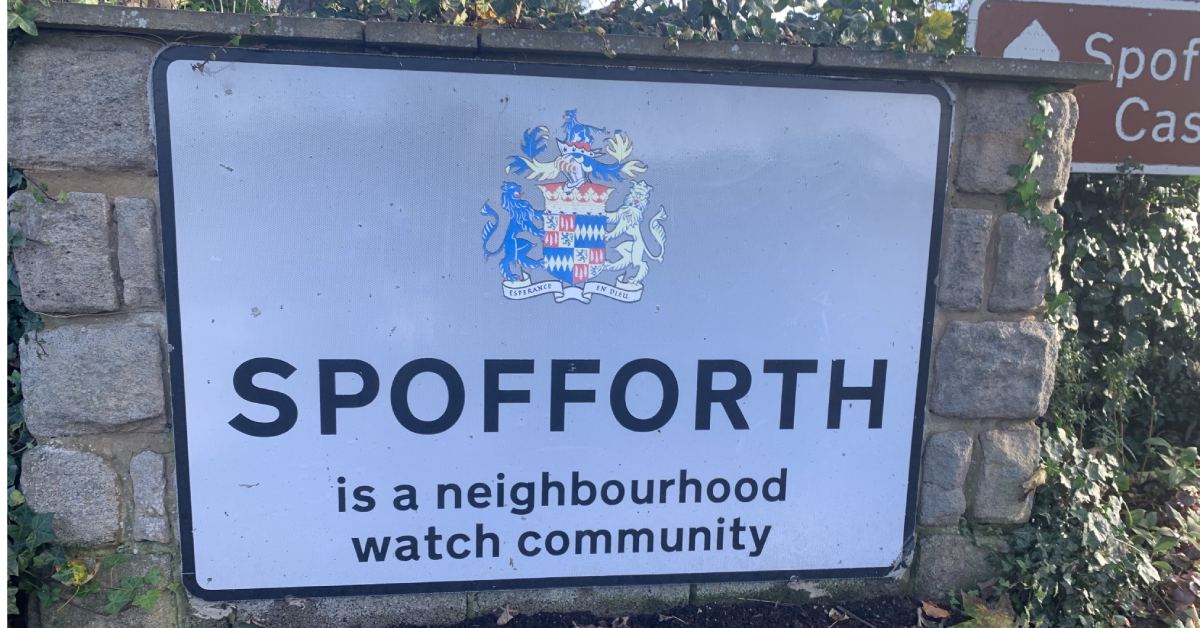Subscribe to trusted local news
In a time of both misinformation and too much information, quality journalism is more crucial than ever. By subscribing, you can help us get the story right.
- Subscription costs less than £1 a week with an annual plan.
Already a subscriber? Log in here.
17
Nov 2020
Spofforth: a broken planning system that's failed a village

Today, details of a sensitive housing development go to Harrogate Borough Council planning committee for approval.
The Vistry Partnership and Yorkshire Housing Ltd want to build 72 houses on a 2.8-hectare site on the edge of Spofforth, a conservation village, south of Harrogate.
Over 300 locals, Historic England, Natural England, Yorkshire Wildlife Trust, the council's principal ecologist, North Yorkshire's highways, the Lead Local Flood Authority and Spofforth Parish Council all raised serious concerns.
They range from the adverse impact of development upon historic character and setting, regionally important green infrastructure, bio habitat-diversity, road safety, congestion, risk of flooding. subsidence and surface water drainage.
A village at risk
Spofforth is built on a ridge overlooking fields that have been farmed since the 8th century.
The village is listed in the Doomsday Book with a long and chequered past.
Locals are protective of over 30 Grade II listed heritage assets that are to be found in this beautiful village.
In 1978, this legacy was awarded conservation status in recognition of the village’s special character and distinctiveness of its setting, buildings and open spaces.
But Spofforth, like so many other rural settlements in the borough is facing rapid expansion under Harrogate Borough Council's drive to meet housing targets.

The development
In March 2019, Opus North (Spofforth) Ltd acquired outline planning permission on the ‘Massey Fold’ site in Spofforth.
The ‘indicative’ plans showed a luxury development with a series of ponds, substantial landscaping and trees.
Historic England, the council’s conservation officer, and the borough council's Local Plan raised concerns that any development on the site would cause "significant harm" to the village's unique character.
A previous application on the same site had been refused for that reason.
Historic England warned planners that that there must be ‘clear and convincing justification and that the public benefits of the proposal outweigh the harm’.
Planners claimed that ‘the benefit would come from the delivery of new homes’.
Later that year Opus North put the site up for sale. The Vistry Partnership (formerly Bovis) and Yorkshire Housing Association reached agreement to take the site forward to completion.
To overcome the various challenges the site presented, a new plan was drafted by the developers.
Natural England, the borough council's principal ecologist, and Yorkshire Wildlife Trust had all originally advised planners that the development will have a long-term impact on the ecological functioning of the River Crimple Corridor.
The principal ecology officer reminded planners that the National Planning Policy Framework protected against a net loss of biodiversity and advised that the original plan should not be accepted by the local authority.
The plan was then adjusted to take in concerns but neither the principal ecologist nor Historic England have subsequently been consulted about the latest lay-out design, access and landscaping proposals going to committee today.
Harrogate Borough Council argues there is no requirement to re-consult as "the principle of development has been established".
The parish council says that the most recent plans are so far removed from the original proposal a new, full application should be made.
Flood risk
Harrogate Borough Council is responsible for ensuring that the drainage on the site meets a myriad of conditions to protect the new homes and surrounding properties from flooding.
The fields are known to have flooded since medieval times.
Locals sent photographs to planners showing the river inches away from breaching Spofforth’s flood defences during Boxing Day floods in 2015.
In a public consultation in August 2017, residents expressed the concerns:
More recently Marmaduke Heslop contacted planners saying:
Over the past three years, various versions of a drainage system for the development have been put forward to protect the site and surrounding properties from surface water and flooding.
The parish council says these are ‘ill-considered’. The Lead Localised Flooding Authority(LFFA) consults and advises the council on surface water drainage. In a letter dated 16th October this year, they emphasised early advise and told planners:
The latest proposal involves raising the site level by 1.5 metres sloping towards the existing level at the foot of the flood defences and surrounding properties.
The parish council told planners:
A failing system
The council says:
But last month, the council received a letter from the parish council. It listed 18 policies contained within the Local Development Plan, the National Planning Policy Framework, and the Town and Country Planning Act, which the parish council considered were not well met by the scheme.
The council has acknowledged the concerns and attached an elaborate list of ‘conditions’ to any approval to mitigate the issues.
But it’s not enough for the parish council, which said:
Today the planning department is recommending to the planning committee that the decision should be deferred to the chief planner, John Worthington to approve when all conditions are satisfied.
Harrogate Borough Council released a statement saying:
As a resident of Spofforth I contacted my local conservative MP, Nigel Adams, and outlined all the concerns raised in this report. His office has contacted me making it clear he is well aware of the issues:
Nothing so far has allayed fears of flooding or convinced the locals that the proposed development offers the benefits the council claims it will have.
0